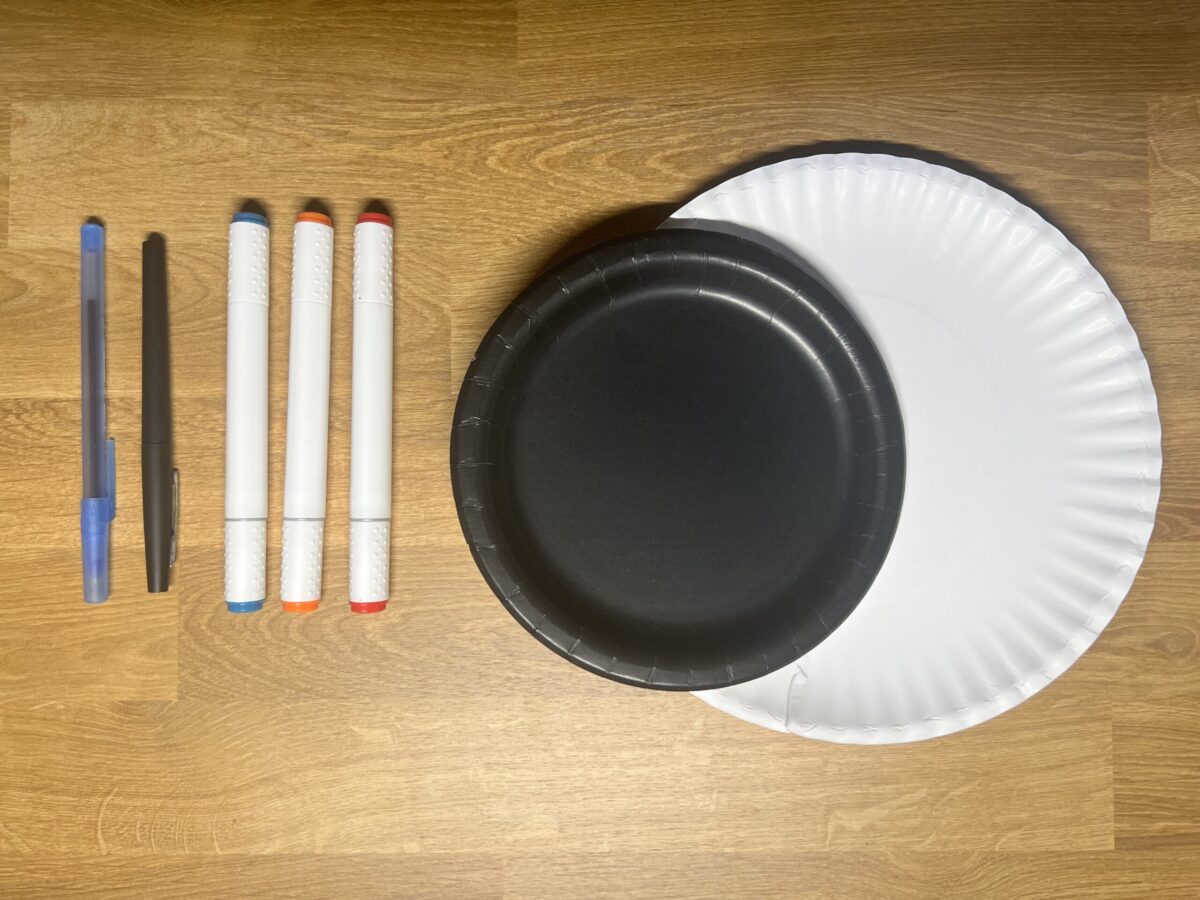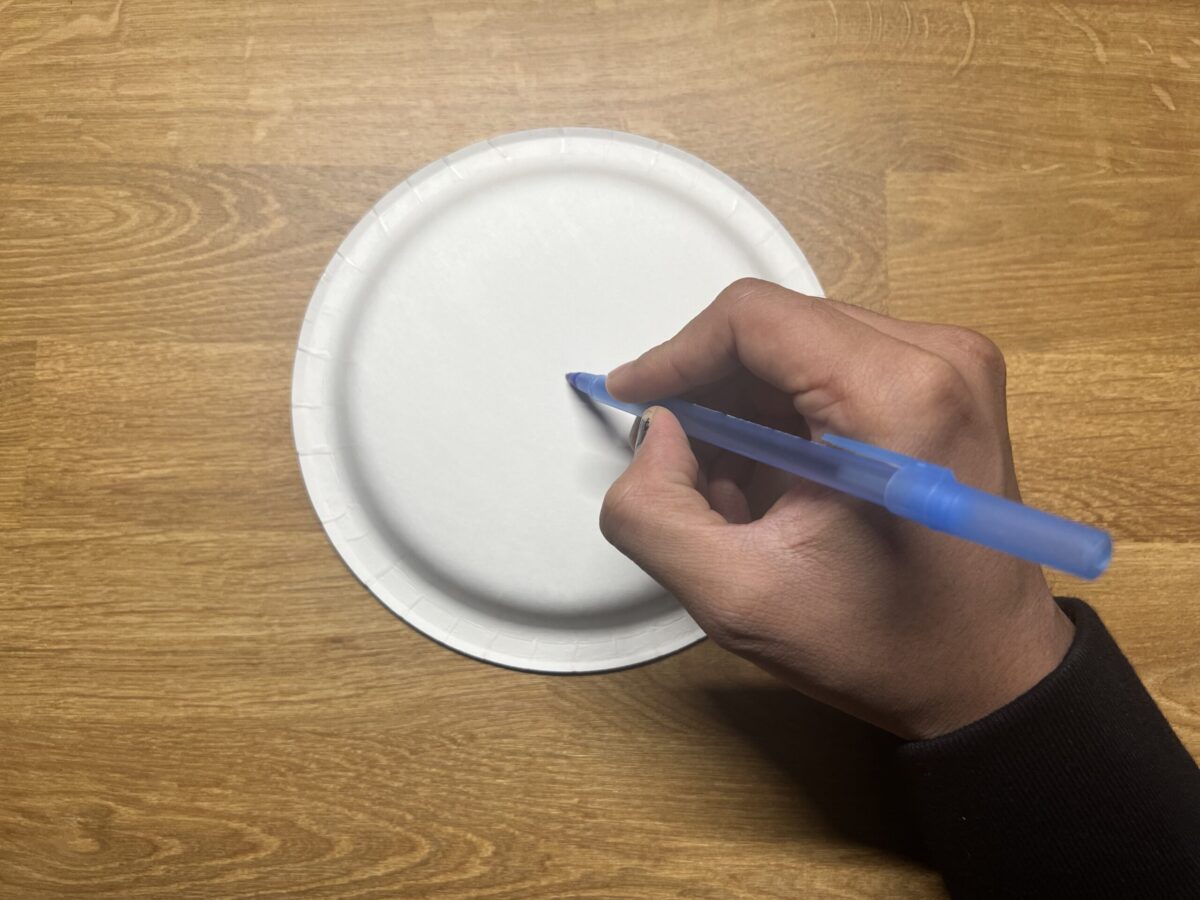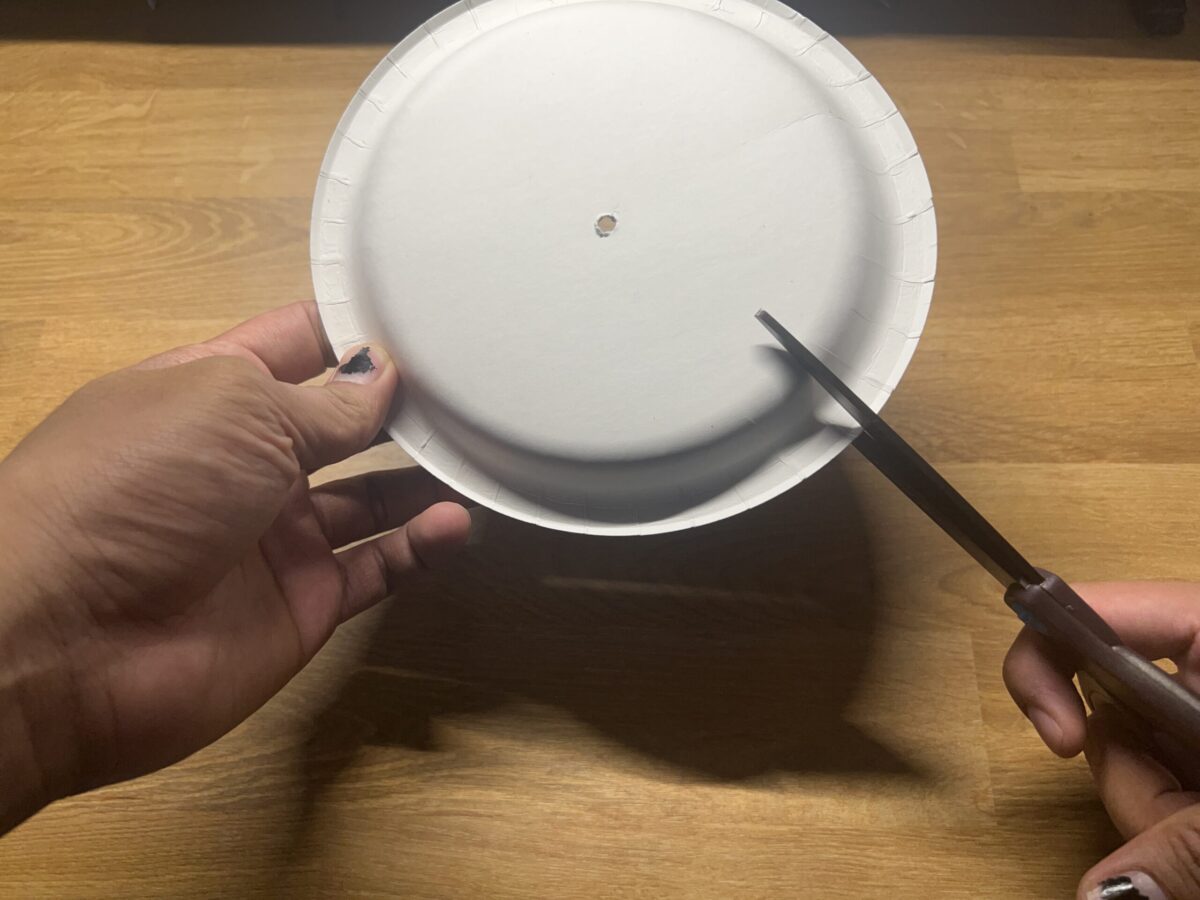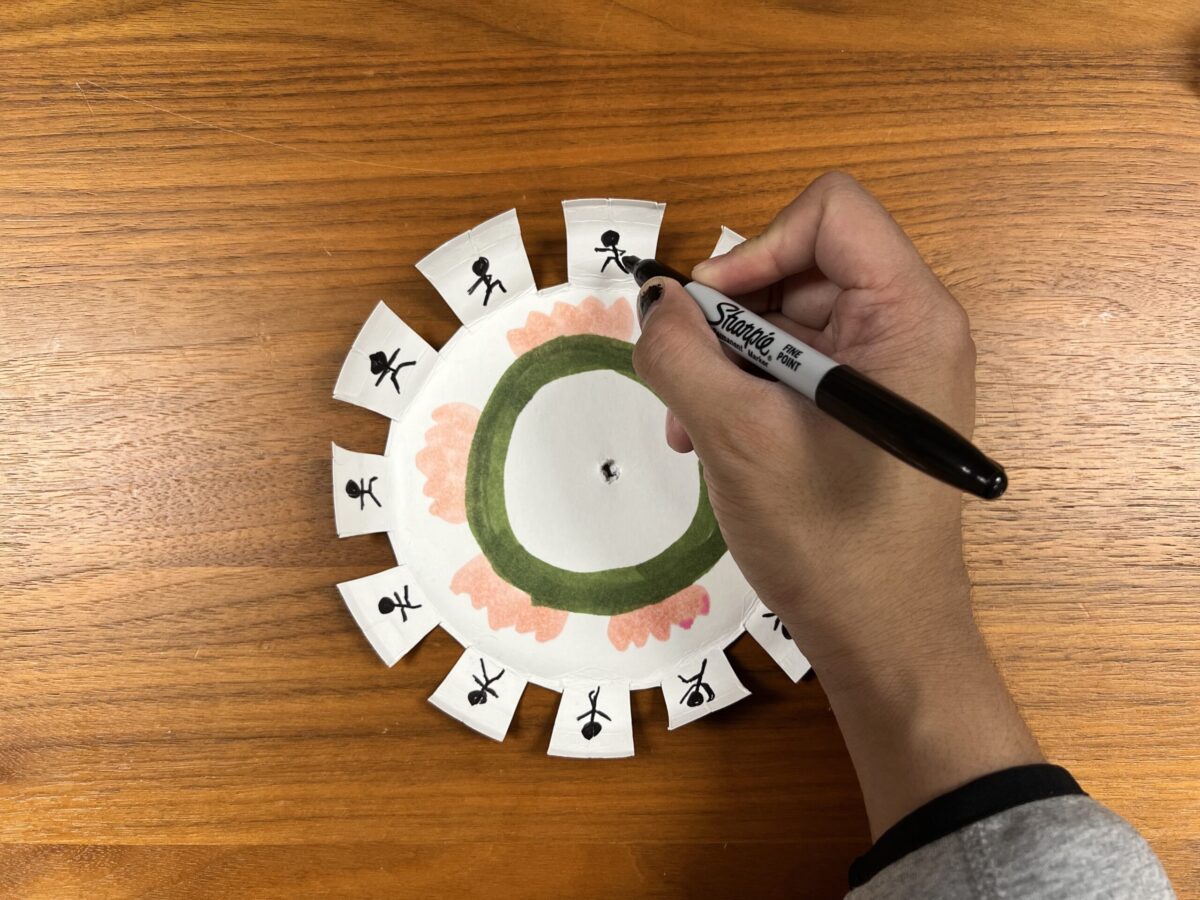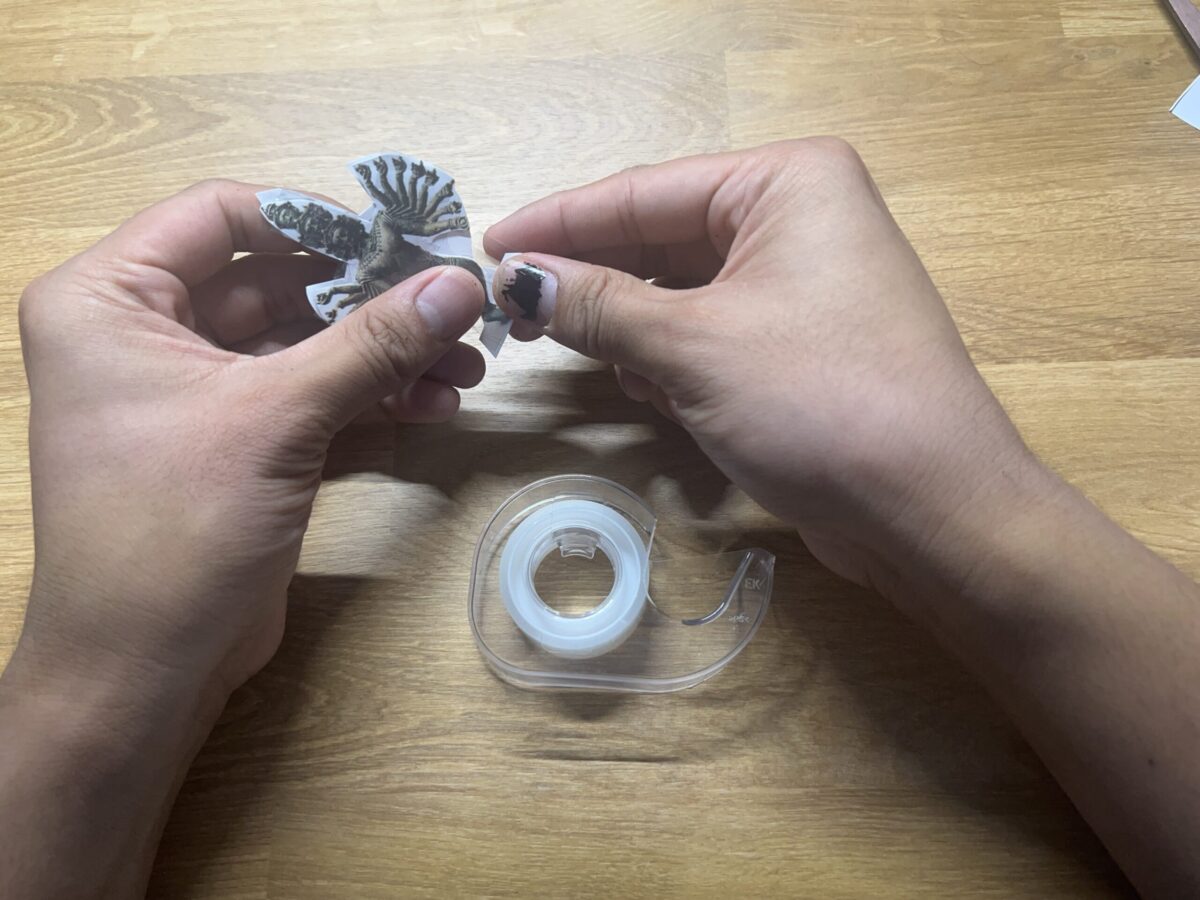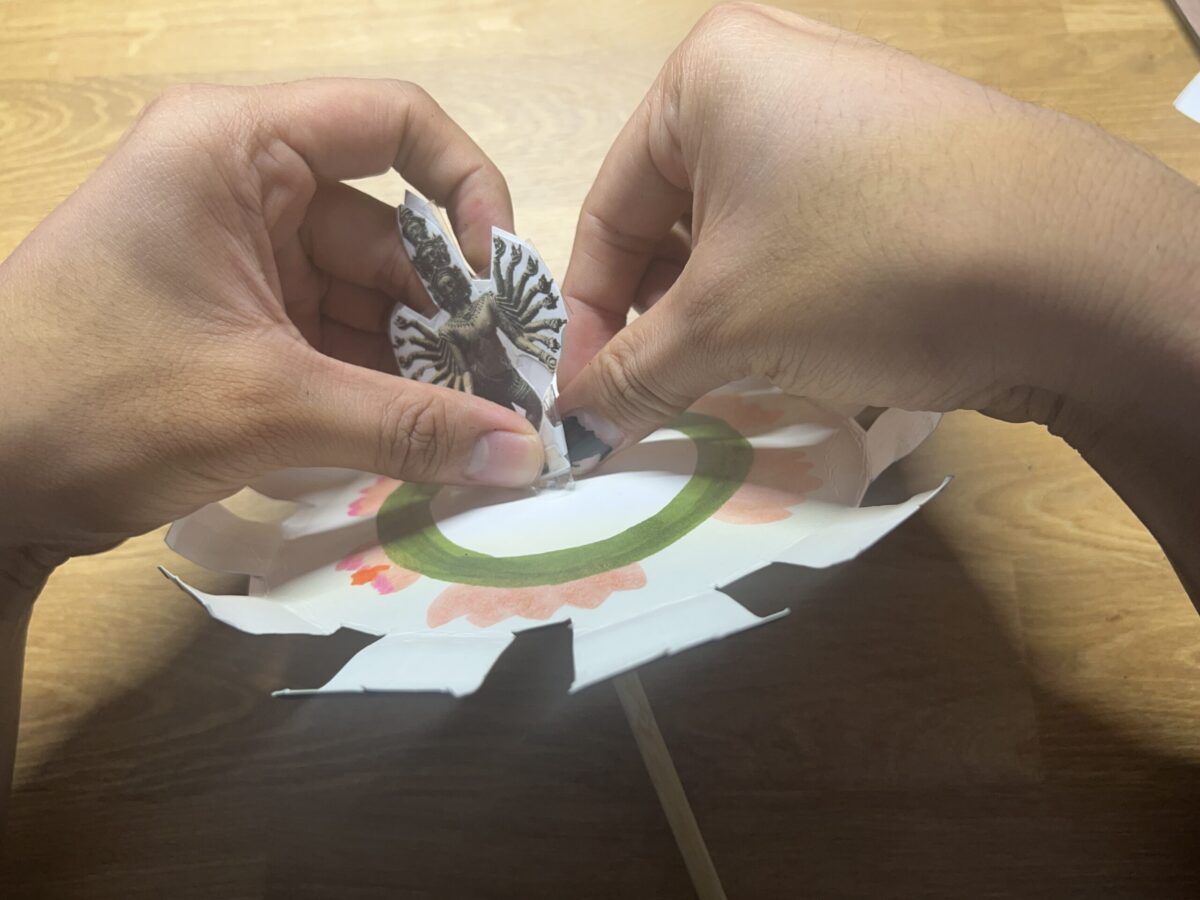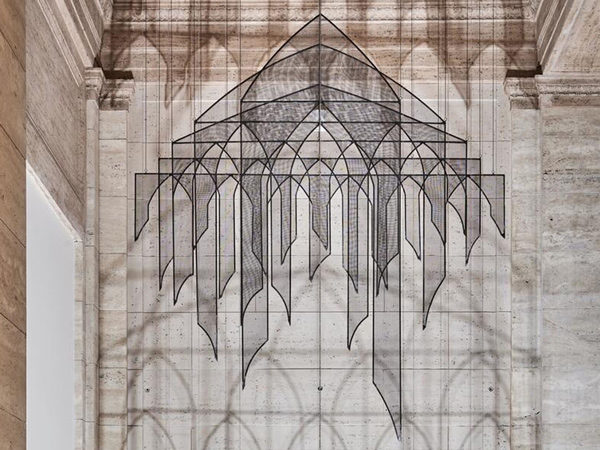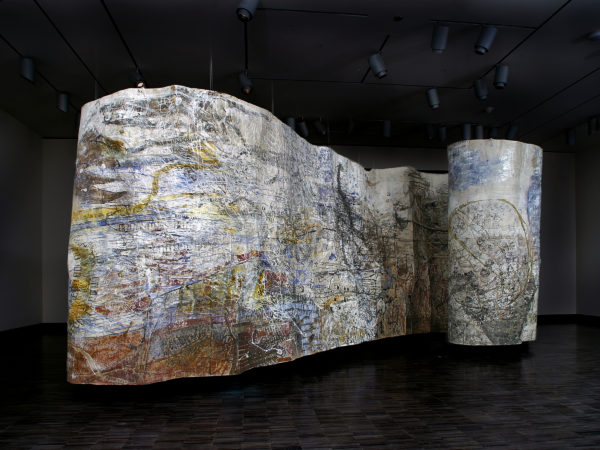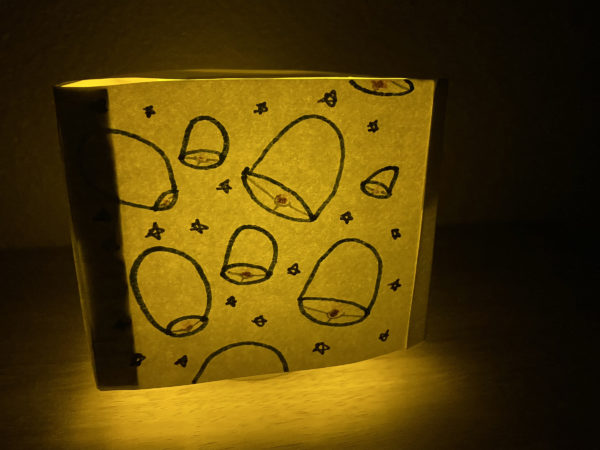Activity
Make your own Dance Mandala
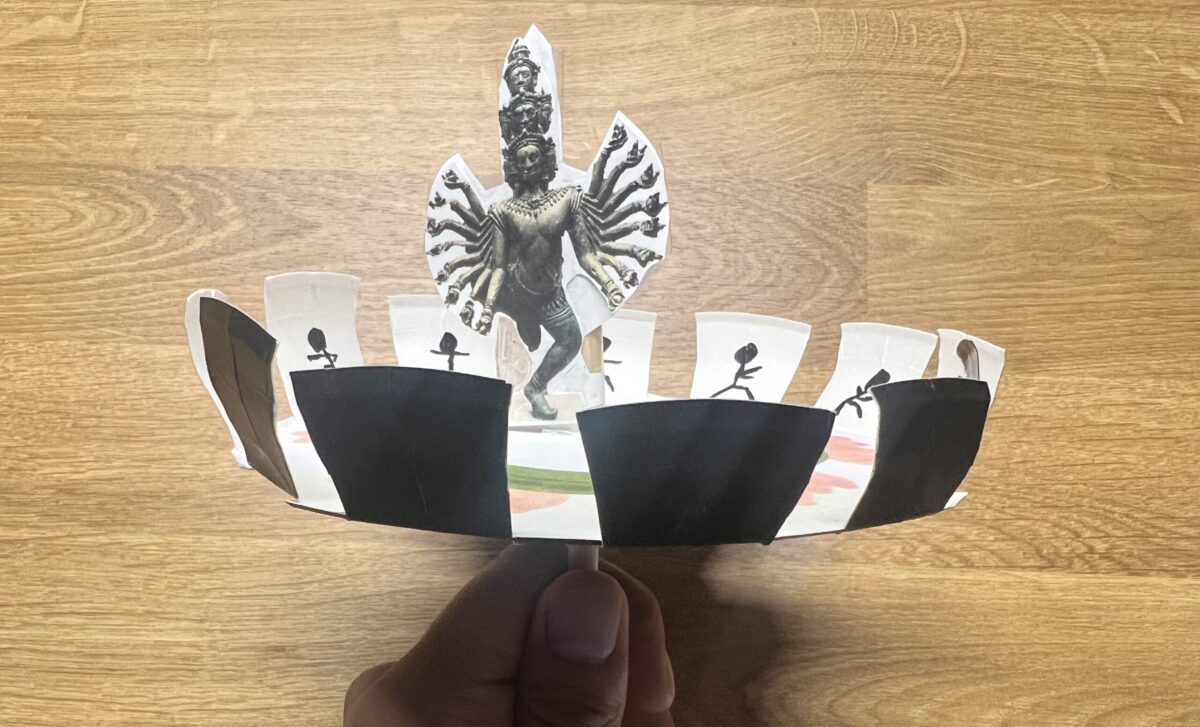
Click through the gallery to see instructions to create your own Dance Mandala!
Download the activity packet in the sidebar for instructions.
The Beyond Bollywood exhibition features two types of mandalas (geometric meditation diagrams). One is the rasamandala, depicting the dance of devotion between the Hindu deity Krishna and the cowherd women.
Another is the lotus mandala, on which the Buddhist deity Hevajra dances with yoginis (mistresses of yoga and magic).
In these examples, the circling dancers feel a powerful connection to the central figure. Can you think of other dances that take place in a circle? What makes circle dances so compelling?
Make your own mandala depicting a circle dance!
Materials:
• Paper plates
* Thin wooden dowels or chopsticks
• Color pens, pencils, crayons
• Beyond Bollywood dance mandala figures (download from sidebar)
• Tape
Steps:
- Use a ballpoint pen to poke a small hole in the center of a paper plate. Cut out the “petals” for your mandala. You can make them any shape you like.
- Decorate the center of your plate with repeating patterns. These could be geometric shapes or they might be images from nature (flowers, animals, etc.). Then draw a dancer on each petal; show the dancers making different poses.
- From the options provided in the sidebar, choose a central figure for your mandala — it could be Krishna, Hevajra, or simply another dancer. Cut out two images of your chosen central figure. Poke a chopstick through the center hole you made. Tape your two central images “back to back” on the part of the chopstick that is inside the mandala.
- Flip your petals up so that they are standing. Twirl your mandala to watch the emerging circle dance!
Bonus: Your mandala can also work as a zoetrope, a device that served as an early form of animation. You can draw your circling dancers so that they show a gradual progression of dance steps, then look through the slits between the petals as you twirl your mandala. It will look like the figures on the petals are dancing! This works especially well if you have a black paper plate and use the black surface as the “outside” of your petals.

